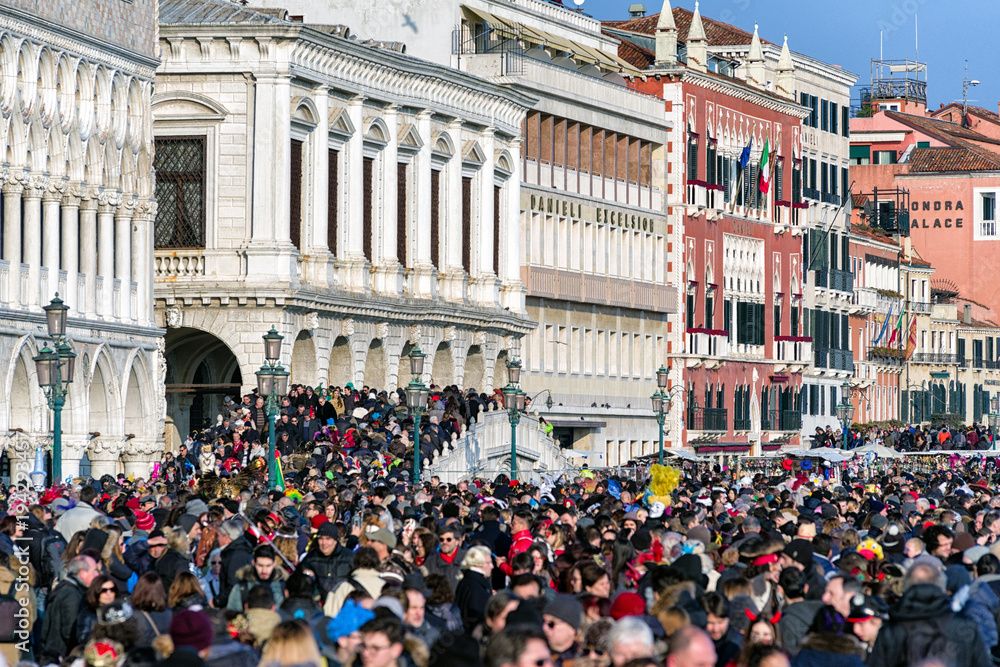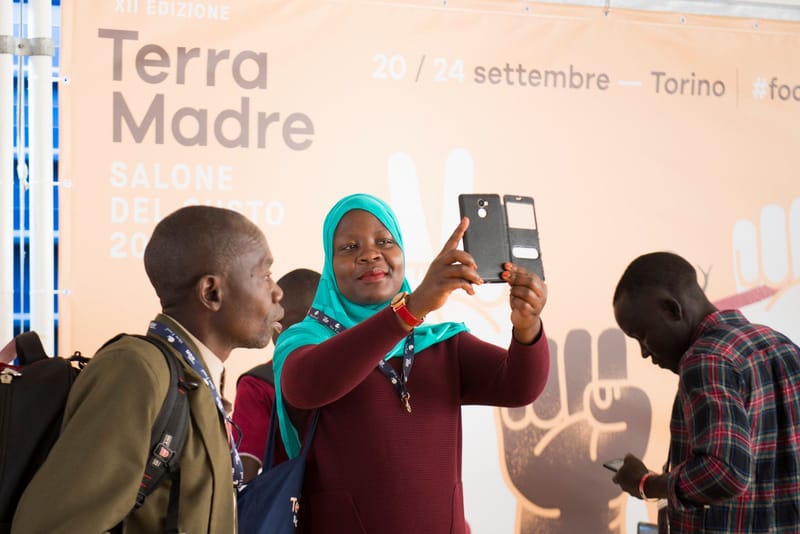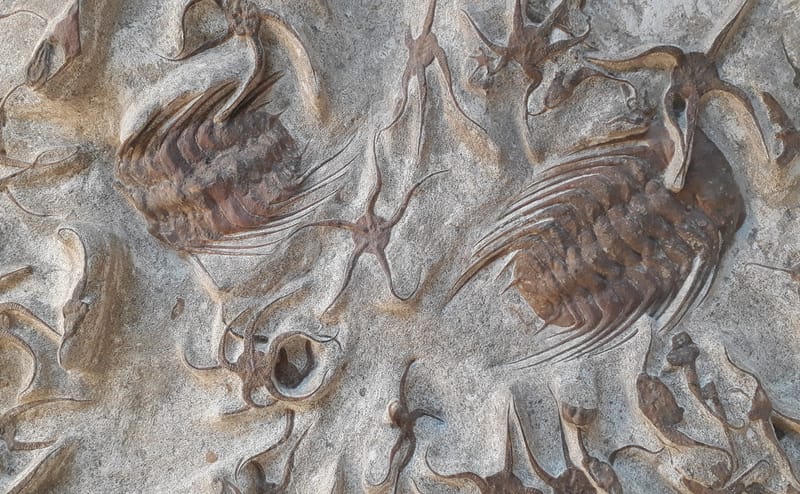Overtourism, the phenomenon has a first scientific approach study
As part of the TTG Travel Experience international tourism fair in Rimini, Federalberghi Veneto and the consulting firm Sociometrica presented the first "Overtourism Report" to the public.

The survey, contributed by Teamwork and Cherry Bank, attempts to shed light, for the first time in a scientific and analytical manner, on a phenomenon that animates public debate and threatens to negatively affect the Italian and regional tourism sector.
The study, analyzed for the first time in a more systematic way and with the help of specific indicators, aimed to provide a solid basis for understanding, and hopefully addressing, the issue of tourist overcrowding by putting an analytical approach and objective data at the center of the investigation. The survey presented in Rimini focuses on tourism-destination municipalities in the Veneto region, but its methodology, the project leaders stress, can also be applied to other contexts and territories.
OVERTOURISM, AN "ELUSIVE" DEFINITION.
Overtourism-literally translatable as "too much tourism "-is an issue that has become of great interest and of pressing relevance in the Veneto region as well. However, we often see a representation dominated more by opinions, subjective perceptions, and currents of thought than by concrete, scientific and incontrovertible data. As director Preiti did not fail to mention, citing Harold Goodwin and his essay The Challenge of Overtourism, it is crucial to consider that the phenomenon affects not only residents but also guests: the former may feel their quality of life worsened as a result of the constant and excessive presence of tourists; the latter may see their travel experience (so-called experiential tourism) compromised due to city congestion and/or improper flow management. It follows that the very definition of "overtourism" is elusive and improper when conditioned only by the perception and subjectivity of those involved, whether residents or tourists. However, an inaccurate or distorted narrative could bring heavy repercussions on local economies and particularly for those cities and small towns that are heavily dependent on tourism.
THE SEARCH FOR AN OBJECTIVE METHOD
With the ambition, therefore, to answer the fateful question "When can we talk about overtourism?" without, however, neglecting the value of the subjective factors that are often pivotal elements in the perception of a tourist destination, the study wanted to follow a scientific and analytical method that could help to identify the actual "excess" of tourist affluence, understanding the circumstances and the ways in which the phenomenon manifests itself. To do so, it started with a series of indicators based on available and consistent data over time that anyone could verify and that had objective value. The most effective one presented is the so-calledTourism Exposure, which in turn consists of two fundamental indicators: intensity and extent. Both dimensions are crucial to understanding and managing the impacts of tourism on a destination.
THE INTENSITY OF OVERTOURISM.
The intensity of overtourism assesses the concentration of tourists in a specific area or destination during a specific period, compared to the local population, in other words it quantifies the tourist presence compared to the resident population. In Veneto, as many as 65.5 percent of the municipalities (out of a total of 563) are affected by tourism. The data show that the municipality of Lazise, in the province of Verona, has the highest ratio of tourist presence to resident population (1.5), meaning that tourists on an average day represent 150 percent of the resident population. In second place is the municipality of Cavallino-Treporti (1.4) followed by San Michele al Tagliamento (1.3). Venice, which does not appear in the ranking of the top 20 municipalities in the Veneto region, deserves a separate discussion since the indicator changes greatly when related to the population of the historic center (less than 50,000 inhabitants), where the vacation is known to take place, or when related to the entire population of the municipality (256,083 inhabitants, Istat data). Considering only the inhabitants of the historic center, the tourism intensity indicator becomes 0.6, placing Venice in ninth place in the ranking.
Slightly different is the picture if one calculates, in addition to regular stays in hotel and non-hotel accommodations, also the presences deriving from the so-called "short rentals" of which it is not easy to make an estimate. Still considering the top 50 tourist municipalities in the Veneto region, the intensity indicator always sees the municipality of Lazise in first place (1.45 tourists per inhabitant) followed by San Michele al Tagliamento and Cavallino-Treporti, localities where the presence of "open air" tourism is particularly strong.
THE RESULTS OF THE RESEARCH
Thus, considering this perspective, the report divides Veneto municipalities into four categories:
- Municipalities with very high attendance: the number of average tourists per day equals or exceeds the population (for every resident there is a tourist, or more than one). In Veneto, there are 5 of them;
- Municipalities with high attendance: the number of average tourists per day weighs from 25% to 100% of the population (per 100 residents, there are 25 to 99 tourists). There are 18 in the region;
- Municipalities with average attendance: the number of average tourists per day weighs from 10% to 25% of the population (per 100 residents, there are 10 to 25 tourists). Seventy municipalities belong to this category;
- Municipalities with low attendance: the number of average tourists per day weighs under 10 percent of the population (per 100 residents, there are fewer than 10 tourists). In Veneto, there are 263 of them;
To be precise, 254 municipalities do not have substantial tourist flows and are not part of this analysis. In general, dealing with population, the most populous cities such as Venice are not at the top of the ranking.
THE EXTENSION OF OVERTOURISM
The second and key parameter that makes up the indicator "Tourism Exposure," the extent of overtourism assesses the geographical spread of tourists over a wider area or region, that is, it looks at the extent of tourist presence in an area.
Venice is the only case in which the study distinctly considers the area of greatest tourist attraction (obviously the historic center and its islands) as opposed to the rest of the municipality (Mestre and the mainland). The city thus jumps to the top of the ranking by registering a very high density: 3,845 tourists/km² instead of 94.7 considering the entire municipal area. This figure is particularly significant in light of assessing the impact of overtourism on the city and its delicate balance (it is an island, it is pedestrian, etc.). They are followed, far behind, by the municipality of Cavallino-Treporti with 410 tourists/km² and an area of 44.7 km² and Peschiera del Garda with 333 tourists/km² and an area of 18.3 km². The report emphasizes, on the one hand, the difficulties in defining the areas to be considered as having a greater tourist attraction even within the same municipality (think of the different sestieri of Venice, for example) and, on the other hand, it is deemed necessary to consider different elements such as the nature of the territory, the distribution of flows within it, the organization of logistics, etc.
Again, the report then considers non-hotel presences and those resulting from short tourist rentals. The ranking does not change much on the positions front, but a great deal in absolute values: the island of Venice touches close to 5,050 tourists/km² (5,048.5 to be exact), while for Cavallino-Treporti the difference is very slight (from 410 to 416 tourists/km²) and so is Peschiera del Garda (from 333 to 366 tourists/km²).
THE TOURISM EXPOSURE INDEX IN THE MUNICIPALITIES OF VENETO
Once these two indicators (intensity and extent) have been calculated, the study is concerned with "normalizing" them, i.e., considering them on a common comparable scale, and then combining them together to create the synthetic core indicator of "Tourism Exposure." It is calculated at 0 to 1: where destinations reach a value of zero, it means that in those locations both the intensity and extent of the tourism phenomenon is minimal, or completely nonexistent. On the other hand, in the case where the value is 1, it means that there is the maximum exposure of the municipality to the tourism phenomenon.
CONCLUSIONS
In summary, combining the two indices, Venice historic center comes in first place, reaching a value of 0.76 on a scale of 0 to 1. This means that, with respect to a theoretical total saturation of the population and territory of the island of Venice with respect to tourism, we would be at 76% with a theoretical maximum of 100%. If, on the other hand, we were to consider Venice as a municipality, therefore considering both the total population and the total area of the municipality, then the municipality as a whole would rank 28th. In second place is Lazise, with the combined index of 0.52, followed by San Michele al Tagliamento tied with Cavallino Treporti (0.49).
Even in the case of this synthetic and general indicator, it is not possible to define a value beyond which there is total and overall overtourism, except when the maximum value of 1 is reached or one is in its vicinity. However, emphasizes the analysis prepared by Sociometrica, it is possible to indicatively set the "peg" of 0.75, a saturation value beyond which the tourist presence becomes hardly sustainableandnegative mechanisms are triggered both on the demand side, because tourists would not visit an overcrowded locality twice; and on the residency side because the quality of life of the inhabitants would be compromised.






